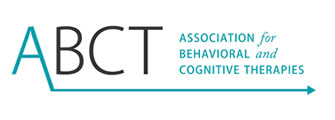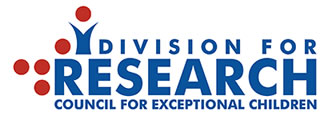
Parents face issues – rarely considered years ago – if their child is questioning their gender identity and behaving in ways not typical of what is expected of their sex. Can children know their gender identity? If I want to help my child explore or express a different gender identity, how do I go about this? Is this going to confuse my child later?
Some of these questions are being answered directly and indirectly by research. Additionally, the clinical experience of experts in the field of gender identity addresses these concerns. This blog will focus on children who have not yet gone through, or are early in, puberty and their gender identities.
First, we need to understand some terminology – a lot of this can seem confusing!
Sex is a label applied by medical professionals based on apparent reproductive organs, genetics (e.g., XX – female, XY – male, or other combinations for some intersex individuals), and/or similar biological factors.
Gender markers are legal labels, usually Male (M) or Female (F), assigned at birth. In some states, people who are intersex (have ambiguous genitalia and/or differing reproductive organs due to hormonal and chromosomal variations) are allowed different legal markers than M or F (e.g., X). The X may also be used when people feel they do not have a Male or Female gender identity (see Non-binary described below).
Gender identity refers to a person’s inner sense of their gender which may be male, female, both, neither, “fluid” (changing) or many additional experiences.
Cisgender, means a person’s assigned sex matches their gender identity. Most people are cisgender. Children usually have a sense of their gender identity by age 3.
Transgender means a person’s gender identity is not aligned with their sex assigned at birth. Professionals have seen children as young as 3 years old who do not identify with their sex assigned at birth. However, most children recognize at an older age that they are transgender. A child assigned male at birth (AMAB) identifying as female is a (trans)girl and a child assigned female at birth (AFAB) identifying as male is a (trans)boy.
Non-binary (NB) describes people who identify as neither male nor female, meaning they experience their gender as not fitting the binary notion of M or F. Some children identify as non-binary in elementary school. However, most youth find this label a little later because it is more challenging for a child to name that they don’t relate to the 2 main categories of sex that family and society usually discuss.
Gender roles and behavior refer to typical expectations for people’s assigned sex. This may include clothing, hairstyles, names, and pronouns (e.g., he/him, she/her, they/them).
Gender non-conforming (GNC) refers to people whose behavior does not fit in with cultural expectations such as boys wearing dresses to school. They may be transgender, non-binary, or neither (i.e., they just don’t conform). GNC behavior is challenging to describe briefly because 1) children may engage in a range of behaviors and explore playing with lots of toys and 2) cultural norms are changing over time. Just because a child does some things not commonly seen in boys or girls doesn’t make them transgender or even GNC. Professionals look at numerous behaviors, ways of thinking and talking, and feelings when assessing children’s gender identities.
Most adults in the United States take for granted wearing the hairstyles and clothing of their choice in social, work, family, and other settings. We also get to tell others the name and pronouns we want to be addressed by. These seemingly simple actions and expressions are part of our gender health, a term coined by Dr. Diane Ehrensaft. In other words, they are ways we express aspects of our own gender role and, likely, our gender identity. Children often have preferences about their hair, clothes, name, and pronouns, too. When their preferences match what is expected of their sex assigned at birth, most parents feel at ease. When children want to express their gender role and/or identity in ways not conforming to social expectations, some parents may be more worried or even become rejecting of their children. Other parents endeavor to support their children in their social transition, meaning the children change to hairstyles, clothes, name, and pronouns that affirm their gender role and/or identity.
There have been attempts to change children’s (even under age 10) gender expression and identity to conform with social expectations. These efforts have been associated with higher rates of depression, suicidal thoughts, and suicide attempts, which last even into adulthood. Gender identity specialists in the early 2000s were increasingly encouraging parents to follow their children’s lead and find ways to support them in the face of challenges with family, peers, school, and other activities. This advice was based on clinical experience treating children with gender incongruence or dysphoria (i.e., distress about the mismatch between assigned gender marker and gender identity). The children usually become more at ease when able to express their gender role or identity as feels authentic to them. In the last 5 years, research has supported this approach even with young children, and much of that has come from the research labs of Kristina Olson, Ph.D. Dr. Olson is a MacArthur Genius Fellow who started this line of inquiry after a family friend talked about questions about her child’s gender non-conformity.
Dr. Olson and colleagues found that transgender children think in very similar ways to their cisgender peers. Children (3-12 years old) who socially transitioned had the same amount of positive self-esteem as cisgender children. They did not have more depression than their non-transgender peers or siblings. They did have slightly higher levels of anxiety–not enough to be considered significant by professionals but enough to be noticed by parents. Other research has indicated that gender-nonconforming children can have poorer psychological health if they have problems relating to other children, suggesting parents may need to help children connect with supportive peers.
All together, these findings make sense. Children, like adults, are healthiest and function well when allowed to have clothes, hairstyles, names and pronouns that feel consistent with their experience of themselves. Most mental health professionals advise parents to follow the child’s lead while maintaining a relationship with a gender identity specialist to help the family over the course of the child’s development and gender journey. Professionals can also assist families in figuring out how to talk with schools, extended family, neighbors, and more. To find a qualified gender specialist, parents can look on websites such as the World Professional Association for Transgender Health (WPATH.org), Psychology Today, or their state’s psychological association. (Note: You may have to interview professionals because lesbian and gay issues are not the same as trans/gender diversity issues, but many sites and professionals lump them together. A qualified professional will be able to talk with you about the most current versions of the WPATH Standards of Care and the trans/gender diverse guidelines of their profession as well as their approaches to gender exploration.) Parents and children alike may benefit from the support of organizations like PFLAG, Gender Spectrum, and other online groups which may also recommend local gender specialists.
Proper citation link for this blog post:Massey, R. (February 12, 2021). What If My Child Wants Clothes and a Name that Doesn’t Match Their Sex? https://infoaboutkids.org/blog/what-if-my-child-wants-clothes-and-a-name-that-doesnt-match-their-sex/
















